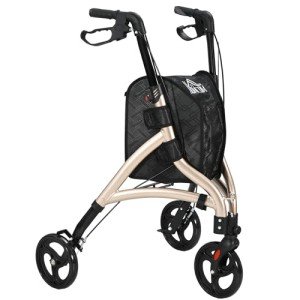
Indoor Walker
Overview
-
Sectors Engineering
-
Posted Jobs 0
-
Viewed 50
Company Description
10 Startups Set To Change The Medical Walker Industry For The Better
Understanding Medical Walkers: A Comprehensive Guide
Medical walkers function as important mobility aids for people recovering from surgical treatment, managing chronic diseases, or handling age-related mobility problems. These gadgets not only enhance physical independence however also enhance safety, allowing users to browse their environments with greater ease. This article checks out the types, benefits, features, and factors to consider related to medical walkers, in addition to some often asked questions.
Tabulation
- Types of Medical Walkers
- Benefits of Using a Medical Walker
- Key Features to Consider
- Often Asked Questions
- Conclusion
1. Types of Medical Walkers
Medical walkers are offered in numerous designs, catering to various needs and choices. The main types consist of:
| Type of Walker | Description |
|---|---|
| Requirement Walker | A rectangular frame with 4 legs, offering stability and assistance. |
| Two-Wheeled Walker | Comparable to a standard walker but equipped with wheels at the front for much easier movement. |
| Three-Wheeled Walker | A Ultra Lightweight 3 Wheel Rollator with Bag walker with three wheels, enabling more maneuverability, ideal for indoor use. |
| Rollator Walker | A walker with four wheels, hand brakes, and a seat, ideal for longer ranges and resting needs. |
| Hemi Walker | Created for people who can use only one hand, featuring a tripod-like style. |
2. Benefits of Using a Medical Walker
Utilizing a medical walker provides several benefits that contribute to the user’s overall well-being, consisting of:
- Increased Stability: Walkers supply a stable base of support, lowering the danger of falls.
- Improved Mobility: They enable users to move more quickly, promoting independence.
- Discomfort Relief: By rearranging weight, walkers can ease pain in the joints, especially in the hips and knees.
- Posture Support: These devices motivate appropriate posture, decreasing pressure on the back.
- Improved Confidence: Users typically feel more safe utilizing walkers, leading to much better self-confidence and increased activity levels.
3. Key Features to Consider
When selecting a medical walker, it’s important to examine different features to discover the right fit. Here are some important elements to consider:
- Weight Capacity: Ensure the walker can support the user’s weight while maintaining stability.
- Height Adjustment: Look for a walker with adjustable height settings to accommodate the user’s height and supply comfy grip.
- Material: Lightweight Ruby Aluminum Shopping Rollator – 36L Capacity Cart walkers are easier to maneuver, while steel walkers offer stronger assistance but might be heavier.
- Wheel Quality: If going with a wheeled walker, think about the wheel size and tread. Bigger wheels navigate irregular surfaces more easily.
- Seat Availability: If users will be walking for longer periods, a walker with an integrated seat can provide rest breaks when required.
- Brakes: Hand brakes are especially crucial for safety in Sturdy Rollator walkers to control speed and stop when needed.
Types of Walkers with Features Comparison Table
| Walker Type | Weight Capacity | Height Adjustment | Wheels | Seat Available | Brakes |
|---|---|---|---|---|---|
| Standard Walker | Approximately 300 lbs | Yes | No | No | No |
| Two-Wheeled Walker | As much as 300 pounds | Yes | Yes | No | No |
| Three-Wheeled Walker | Approximately 250 lbs | Yes | Yes | No | No |
| Stylish Red 3-Wheel Rollator Walker with Bag Walker | As much as 400 pounds | Yes | Yes | Yes | Yes |
| Hemi Walker | Approximately 250 lbs | Yes | No | No | No |
4. Regularly Asked Questions
Q1: Who ought to use a medical walker?A: Medical walkers are beneficial for individuals recuperating from surgical treatment, experiencing balance problems, or requiring assistance due to age-related mobility difficulties. Q2: Can a medical walker be adjusted?A: Yes, a lot of
medical walkers are height-adjustable to accommodate different user heights, enabling a more comfy grip. Q3: How do I choose the ideal walker for my needs?A: Consider aspects such as the
user’s weight, height, type of mobility issues, and whether they require a seat or brakes. Evaluating the walker for comfort and stability before purchase is also recommended. Q4: Are there any safety pointers connected with using a medical walker?A: Yes, users ought to ensure they do not lean too
heavily on the walker, use it on stable and level surfaces, and constantly guarantee
the brakes are engaged when seated or stationary. Q5: Can walking with a medical walker aid with rehabilitation?A: Absolutely. Medical walkers are typically recommended as part of rehabilitation programs as they encourage
physical activity, which aids in recovery and mobility enhancement. 5.
Conclusion Medical walkers play an essential function in enhancing the quality of life for individuals dealing with mobility obstacles. With various types and features offered, choosing the best walker includes thinking about the user’s particular needs and situations. By comprehending their benefits and correct use, individuals can restore independence, enhance their mobility, and browse their environments safely. Whether for short-term healing or long-lasting support, the right medical walker can significantly enhance a user’s overall wellness. Integrating a medical walker into one’s day-to-day routine can be a transformative decision, making it much easier to take part in life’s day-to-day activities while making sure safety and self-confidence.
